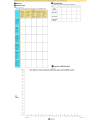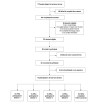Generating Intervention Concepts for Reducing Adolescent Relationship Abuse Inequities Among Sexual and Gender Minority Youth: Protocol for a Web-Based, Longitudinal, Human-Centered Design Study
- PMID: 33843601
- PMCID: PMC8076986
- DOI: 10.2196/26554
Generating Intervention Concepts for Reducing Adolescent Relationship Abuse Inequities Among Sexual and Gender Minority Youth: Protocol for a Web-Based, Longitudinal, Human-Centered Design Study
Abstract
Background: Sexual and gender minority youth (SGMY; eg, lesbian, gay, bisexual, and transgender youth) are at greater risk than their cisgender heterosexual peers for adolescent relationship abuse (ARA; physical, sexual, or psychological abuse in a romantic relationship). However, there is a dearth of efficacious interventions for reducing ARA among SGMY. To address this intervention gap, we designed a novel web-based methodology leveraging the field of human-centered design to generate multiple ARA intervention concepts with SGMY.
Objective: This paper aims to describe study procedures for a pilot study to rigorously test the feasibility, acceptability, and appropriateness of using web-based human-centered design methods with SGMY to create novel, stakeholder-driven ARA intervention concepts.
Methods: We are conducting a longitudinal, web-based human-centered design study with 45-60 SGMY (aged between 14 and 18 years) recruited via social media from across the United States. Using MURAL (a collaborative, visual web-based workspace) and Zoom (a videoconferencing platform), the SGMY will participate in four group-based sessions (1.5 hours each). In session 1, the SGMY will use rose-thorn-bud to individually document their ideas about healthy and unhealthy relationship characteristics and then use affinity clustering as a group to categorize their self-reported ideas based on similarities and differences. In session 2, the SGMY will use rose-thorn-bud to individually critique a universal evidence-based intervention to reduce ARA and affinity clustering to aggregate their ideas as a group. In session 3, the SGMY will use a creative matrix to generate intervention ideas for reducing ARA among them and force-rank the intervention ideas based on their potential ease of implementation and potential impact using an importance-difficulty matrix. In session 4, the SGMY will generate and refine intervention concepts (from session 3 ideations) to reduce ARA using round robin (for rapid iteration) and concept poster (for fleshing out ideas more fully). We will use content analyses to document the intervention concepts. In a follow-up survey, the SGMY will complete validated measures about the feasibility, acceptability, and appropriateness of the web-based human-centered design methods (a priori benchmarks for success: means >3.75 on each 5-point scale).
Results: This study was funded in February 2020. Data collection began in August 2020 and will be completed by April 2021.
Conclusions: Through rigorous testing of the feasibility of our web-based human-centered design methodology, our study may help demonstrate the use of human-centered design methods to engage harder-to-reach stakeholders and actively involve them in the co-creation of relevant interventions. Successful completion of this project also has the potential to catalyze intervention research to address ARA inequities for SGMY. Finally, our approach may be transferable to other populations and health topics, thereby advancing prevention science and health equity.
International registered report identifier (irrid): DERR1-10.2196/26554.
Keywords: adolescent; internet-based intervention; intimate partner violence; psychosocial intervention; sexual and gender minorities.
©Robert W S Coulter, Shannon Mitchell, Kelly Prangley, Seth Smallwood, Leyna Bonanno, Elizabeth N Foster, Abby Wilson, Elizabeth Miller, Carla D Chugani. Originally published in JMIR Research Protocols (http://www.researchprotocols.org), 12.04.2021.
Conflict of interest statement
Conflicts of Interest: None declared.
Figures









Similar articles
-
Pilot Testing the Feasibility of a Game Intervention Aimed at Improving Help Seeking and Coping Among Sexual and Gender Minority Youth: Protocol for a Randomized Controlled Trial.JMIR Res Protoc. 2019 Feb 15;8(2):e12164. doi: 10.2196/12164. JMIR Res Protoc. 2019. PMID: 30767903 Free PMC article.
-
Online Human-Centered Design Methods are Acceptable, Appropriate, and Feasible for Generating Adolescent Relationship Abuse Intervention Ideas With Sexual and Gender Diverse Youth.J Adolesc Health. 2024 Oct;75(4):656-664. doi: 10.1016/j.jadohealth.2024.06.001. Epub 2024 Jul 26. J Adolesc Health. 2024. PMID: 39066750
-
An Affirmative Coping Skills Intervention to Improve the Mental and Sexual Health of Sexual and Gender Minority Youth (Project Youth AFFIRM): Protocol for an Implementation Study.JMIR Res Protoc. 2019 Jun 6;8(6):e13462. doi: 10.2196/13462. JMIR Res Protoc. 2019. PMID: 31172957 Free PMC article.
-
Mental Health, Drug, and Violence Interventions for Sexual/Gender Minorities: A Systematic Review.Pediatrics. 2019 Sep;144(3):e20183367. doi: 10.1542/peds.2018-3367. Epub 2019 Aug 19. Pediatrics. 2019. PMID: 31427462 Free PMC article.
-
Sexual and Gender Minority Youth and Sexual Health Education: A Systematic Mapping Review of the Literature.J Adolesc Health. 2021 Jun;68(6):1040-1052. doi: 10.1016/j.jadohealth.2020.09.032. Epub 2020 Nov 5. J Adolesc Health. 2021. PMID: 33162290 Free PMC article.
Cited by
-
A PROGRESS-driven approach to cognitive outcomes after traumatic brain injury: A study protocol for advancing equity, diversity, and inclusion through knowledge synthesis and mobilization.PLoS One. 2024 Jul 22;19(7):e0307418. doi: 10.1371/journal.pone.0307418. eCollection 2024. PLoS One. 2024. PMID: 39037993 Free PMC article.
-
LGBTQ+ Youth-Generated Intervention Concepts for Reducing Teen Dating Violence Inequities.Health Promot Pract. 2023 Mar;24(2):252-257. doi: 10.1177/15248399221137276. Epub 2022 Nov 23. Health Promot Pract. 2023. PMID: 36419324 Free PMC article.
-
Ethical and methodological challenges conducting participative research with transgender and gender-diverse young people: a systematic review.Int J Transgend Health. 2024 Mar 13;25(3):419-438. doi: 10.1080/26895269.2024.2323524. eCollection 2024. Int J Transgend Health. 2024. PMID: 39055638 Free PMC article. Review.
-
A Scoping Review of Digital Health Interventions to Promote Healthy Romantic Relationships in Adolescents.Prev Sci. 2023 May;24(4):625-639. doi: 10.1007/s11121-022-01421-0. Epub 2022 Aug 17. Prev Sci. 2023. PMID: 35976523 Free PMC article.
References
-
- Kann L, Olsen EO, McManus T, Harris WA, Shanklin SL, Flint KH, Queen B, Lowry R, Chyen D, Whittle L, Thornton J, Lim C, Yamakawa Y, Brener N, Zaza S. Sexual identity, sex of sexual contacts, and health-related behaviors among students in grades 9-12 - United States and selected sites, 2015. MMWR Surveill Summ. 2016 Aug 12;65(9):1–202. doi: 10.15585/mmwr.ss6509a1. - DOI - PubMed
-
- Basile KC, Clayton HB, DeGue S, Gilford JW, Vagi KJ, Suarez NA, Zwald ML, Lowry R. Interpersonal violence victimization among high school students - Youth Risk Behavior Survey, United States, 2019. MMWR Suppl. 2020 Aug 21;69(1):28–37. doi: 10.15585/mmwr.su6901a4. http://europepmc.org/abstract/MED/32817605 - DOI - PMC - PubMed
Grants and funding
LinkOut - more resources
Full Text Sources
Miscellaneous

